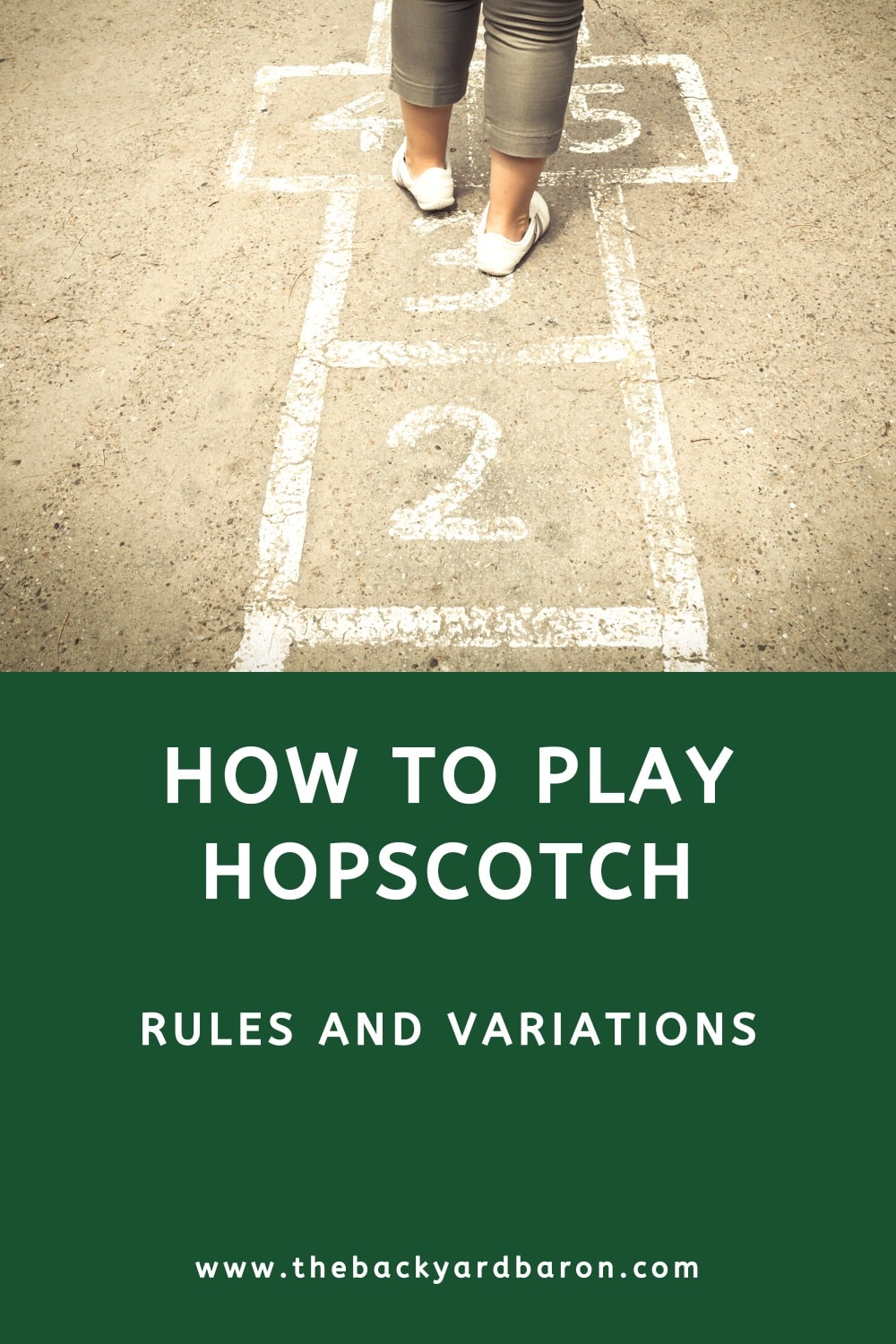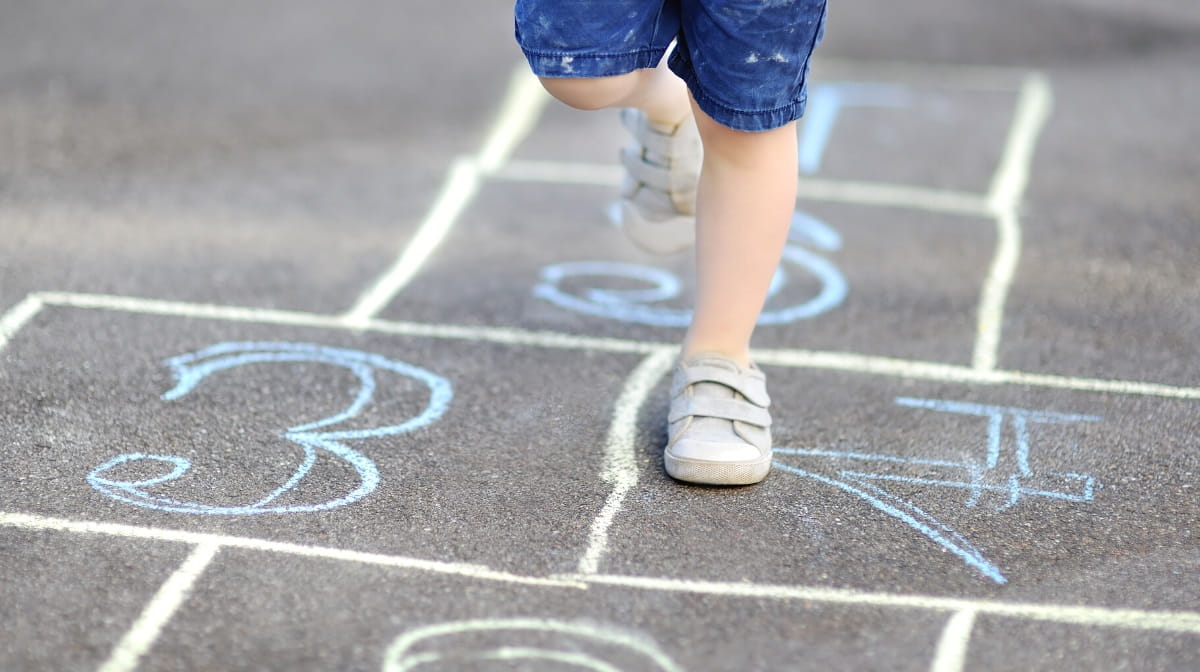Last updated: August 3, 2023
Learn how to play the classic game of hopscotch with our guide explaining the rules, the playing field grid, and game variations.
Hopscotch is a timeless game that anyone can play and doesn’t require any expensive equipment. It can be played in the backyard, in the schoolyard, or on the sidewalk.
Even in today’s world of social media and video games, a game of hopscotch will still put a smile on any kid’s face. It’s fun, it’s social, and it’s great exercise.
In this article, I am going to walk you through the rules of hopscotch and how to set up the playing field grid. Let’s go!
Hopscotch Rules for Dummies
Believe it or not, but hopscotch has quite an interesting and long history, dating back to the Roman empire. But don’t worry; I won’t go into that now.
Before we begin, please note that I’m going to talk about the traditional and most common form of hopscotch in this article, the one we typically see in the schoolyards.
As you might know, there are many variations to this game, and more on that later, but for now, let’s stick with the most common variant.
In this section, we’re going to discuss the following:
- Equipment and setup
- Gameplay (step-by-step)
- Hopscotch variations
1. Equipment and Setup
Let’s start with setting up the hopscotch playing field grid, which is part of the fun.
You need very little to play hopscotch. To create the hopscotch diagram, all you need is some chalk (ideally) or a rock with which you can make lines on the ground outside. If you prefer to play hopscotch inside, masking tape instead of chalk will do.
Once the playing field is drawn out, you will need a marker or other item to throw with. This can be a small stone, a bean bag, a stick, or anything you can throw into the squares.
Hopscotch Grid
Make sure you have a grid design beforehand, just to make it a little easier for yourself. This is the typical hopscotch diagram grid:
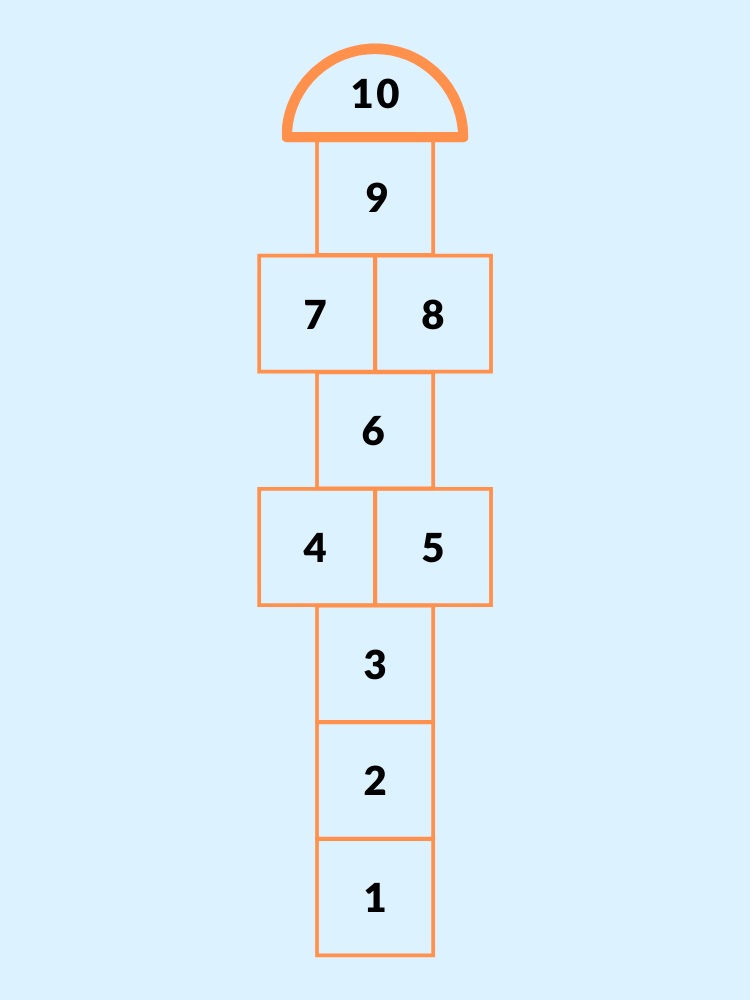
The classic hopscotch board involves drawing nine squares and a half circle.
- Squares 1-3 are single squares drawn on top of each other.
- Then you do two squares side by side for 4 and 5.
- Then a single square for 6.
- Followed by two squares side by side for 7 and 8.
- Then another single square for 9.
- Finish it off with a half circle for 10.
Depending on how much space you have and how old the kids are, you’re free to change this grid. You can make it smaller (and thereby easier) for smaller kids, or bigger for more advanced players.
2. Gameplay (Step-By-Step)
Once the preparation work has been completed, it’s time to start playing a game of hopscotch.
These are the steps:
- Toss the marker into the first square. The marker has to land and stay in the square. If you miss the square, you lose your turn. If you get it in the square, you move on to the next step.
- Hop on all the squares that don’t have the marker in them.
- For single squares (1,2,3,6,9), use one foot. For double squares (4,5 and 7,8), use two feet. If you miss a square, fall, or touch a line, you lose your turn.
- When you reach ten, you have to turn around and hop back to the start the same way. The 10th spot is often considered a free space or a rest point. You can usually set both feet down and turn around without worrying about stepping out of bounds.
- On the return trip, you have to pick up your marker. You must do this while standing in the square next to the one with the marker in it. You still have to skip the square, even after you get your marker.
- Once you have completed the playing field, repeat steps 1-3, tossing the marker onto each square in order.
- The first person to pick up their marker from every square on the board wins the game.
Go ahead, and try it out!
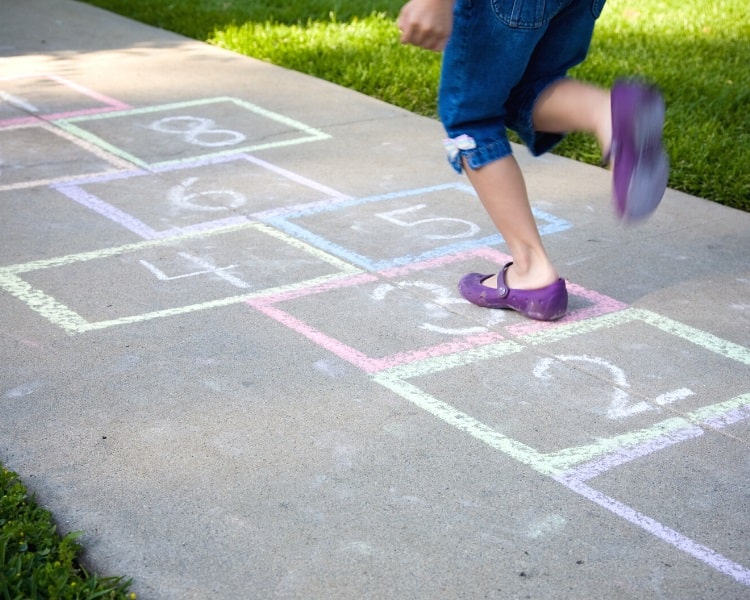
3. Hopscotch Variations
As mentioned, there are many ways you can change the game to make it more unique, especially once you have mastered the traditional hopscotch game.
Here are some examples of fun variations:
3.1. Race the Clock
Adding a time element can make even solo games of hopscotch more entertaining. You can race yourself, your friends, or even the Guinness world record holder Ashrita Furman, who completed a hopscotch game in just over one minute!
3.2. Random Toss
You can toss your marker into squares randomly. You can do this by drawing numbers out of a hat, using a random number generator, or just closing your eyes and tossing. Not knowing where you will have to jump next can add some excitement.
3.3. Sign the Line
You can add this feature to the chance game. Every player has to sign the square where their maker lands when they pick up the stone. This rule adds to your balance and helps you know who is winning in a random game.
3.4. Kick the Marker
Instead of tossing the marker, kick it onto the correct square. Then play the game as per usual.
3.5. Categories
For each square, add a category, like movies, music, or prime numbers. Then when you hop on that square, you have to yell a new item from that category. If you forget or can’t think of one, you are out and have to pass your turn.
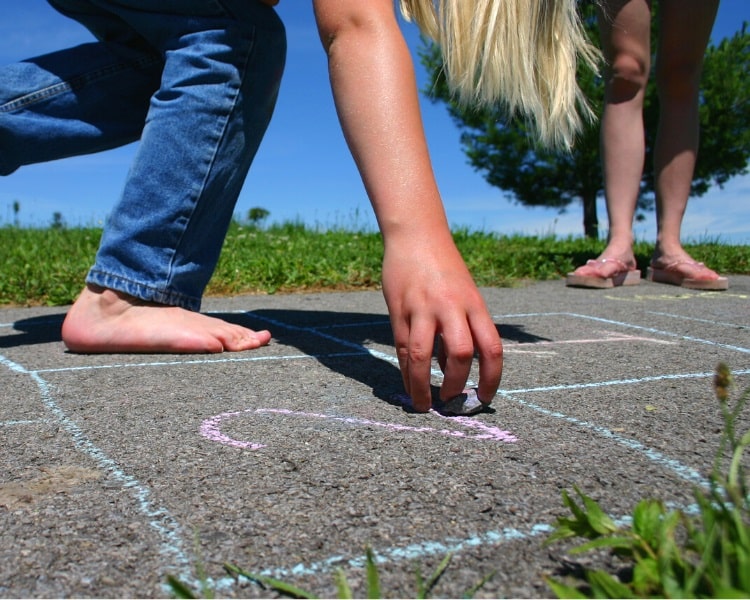
Benefits of Playing Hopscotch
Okay, we can all agree hopscotch is a ton of fun. It’s a great game to play with a group or even by yourself. It’s super easy to set up, and because no equipment is required, you can start playing immediately.
But there are many more benefits of playing hopscotch for kids than just plain fun, as I have happily discovered myself. Let’s explore some of these benefits.
1. Social Skills
Although you can certainly play hopscotch by yourself, with the same rules, most kids will play this game with a bunch of friends, schoolmates, or neighbors.
This obviously gets kids to learn to be more social. They learn how to deal with others in a fun and entertaining, yet semi-competitive, environment.
2. Balance and Control
Aiming the marker to land on the correct square, jumping on all the right squares, keeping balance, picking up the marker, and so much more.
All of these activities combined into one exciting game helps kids to improve their balance and coordination, and makes them more agile overall.
3. Strategic Thinking
Although hopscotch certainly isn’t difficult to learn, it does require a bit of strategic thinking to get better at it.
As the game progresses, the marker moves around, and kids need to change their strategies accordingly.
4. Physical Exercise
Let’s face it, kids need exercise. They need ways to release their energy, and a game of hopscotch is the perfect solution.
Need another idea for great exercise for kids? Try a game of hide and seek in the backyard or in the park!
Final Thoughts
I hope this hopscotch guide has adequately explained the rules and the playing field grid. My kids and I have played numerous games in our backyard, and also outside, with neighbors often joining in.
Another game that kids enjoy is playing with marbles, which can literally keep them entertained for hours. Check out my guide explaining how to play marbles so you can get started with that as well.
Also check out my list of best backyard games for more summer entertainment ideas for the whole family.
